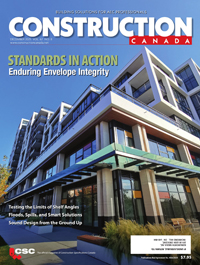Six B.C. projects recognized for slashing carbon emissions

Six trailblazers were recognized for their pioneering work in reducing embodied carbon in British Columbia’s built environment at the third annual Embodied Carbon Awards, hosted by Zero Emissions Innovation Centre.
This year’s winners are:
- Large (Part 3) Buildings: Equilibrium (Royal BC Museum PARC)
- Small (Part 9) Buildings: Deep Green Development (1908 to Net-zero)
- Organizational Commitment to Change: Third Space Properties
- Public Sector Leadership: City of Richmond
- Commitment to Circularity: Perkins&Will
- Strengthening the Practice: Jason Shanks, CBRE’s Turner & Townsend

Photo courtesy Deep Green Development
Embodied carbon comes from producing, transporting, and installing materials such as steel, concrete, and insulation, as well as from demolition and disposal. It is estimated that by 2050, embodied carbon will represent 46 per cent of B.C.’s annual building sector emissions based on current practices (Source: Embodied Carbon Modelling Study, 2022, A. Pak, created for the BC Government). British Columbia and Vancouver are leaders in this space, adopting practices such as designing for fewer materials, using low-carbon materials such as sustainable mass timber, or moving to reuse construction waste in new builds.
This first-of-its-kind event in North America celebrates the leadership and innovation in reducing embodied carbon and aims to inspire broader action from industry and government.


